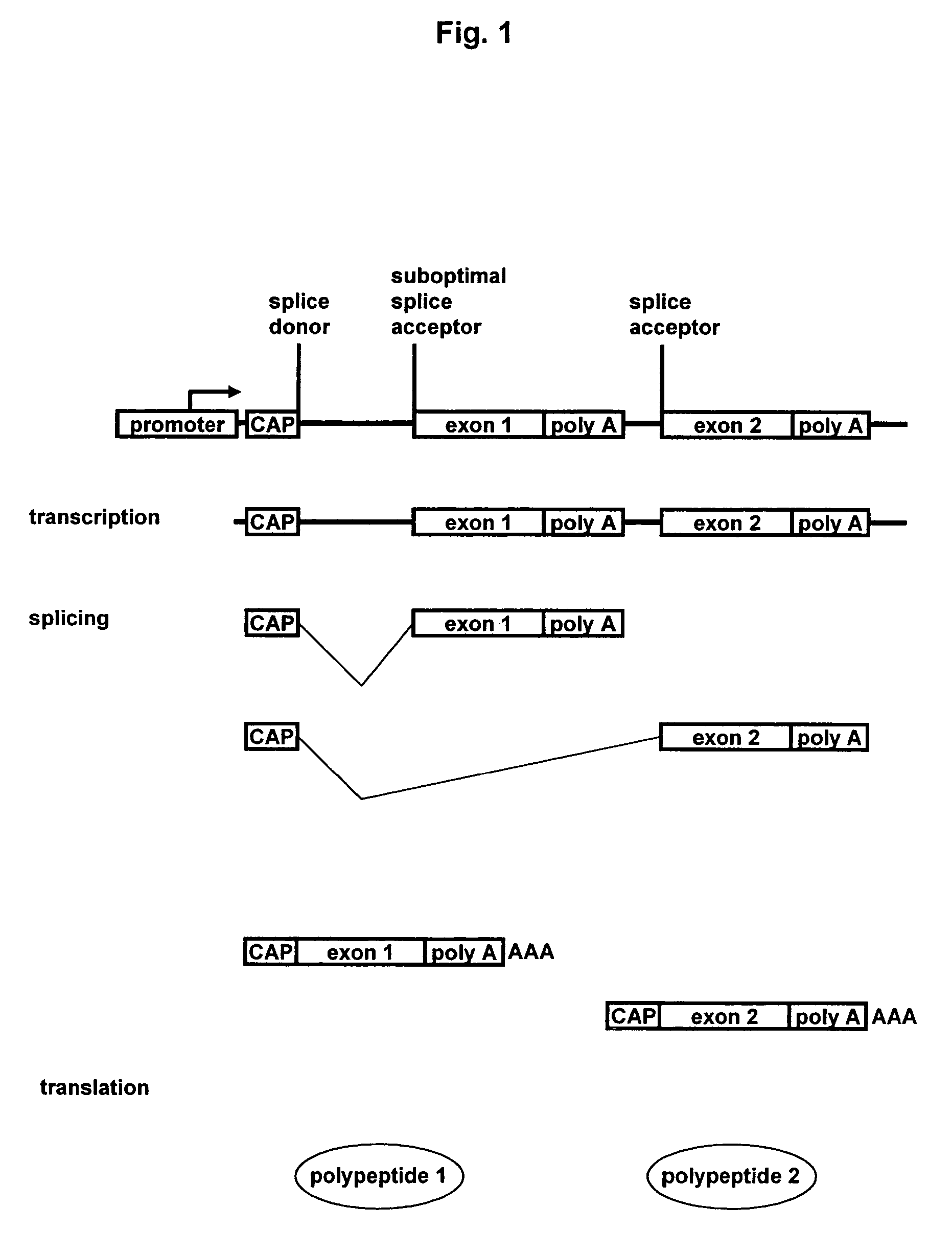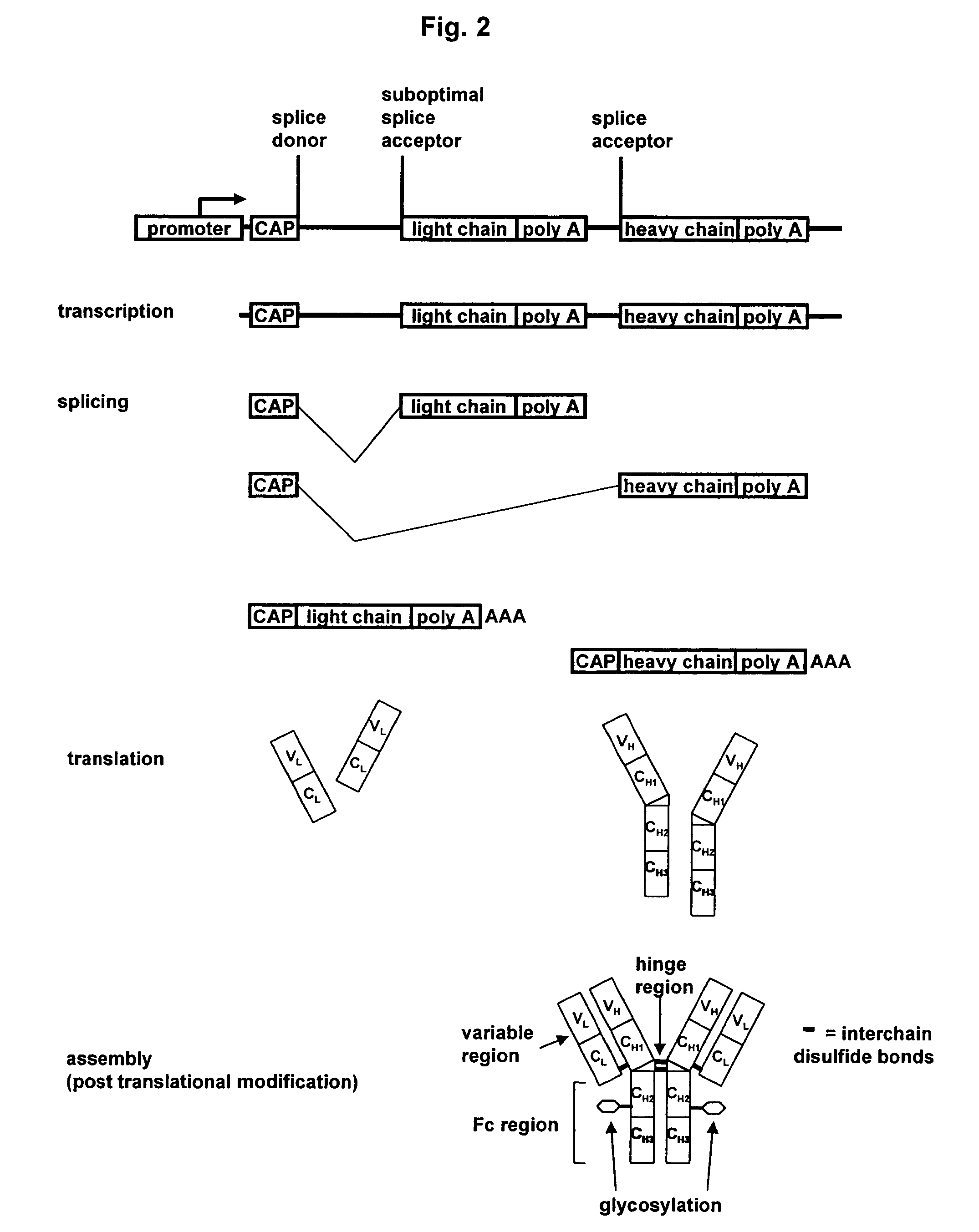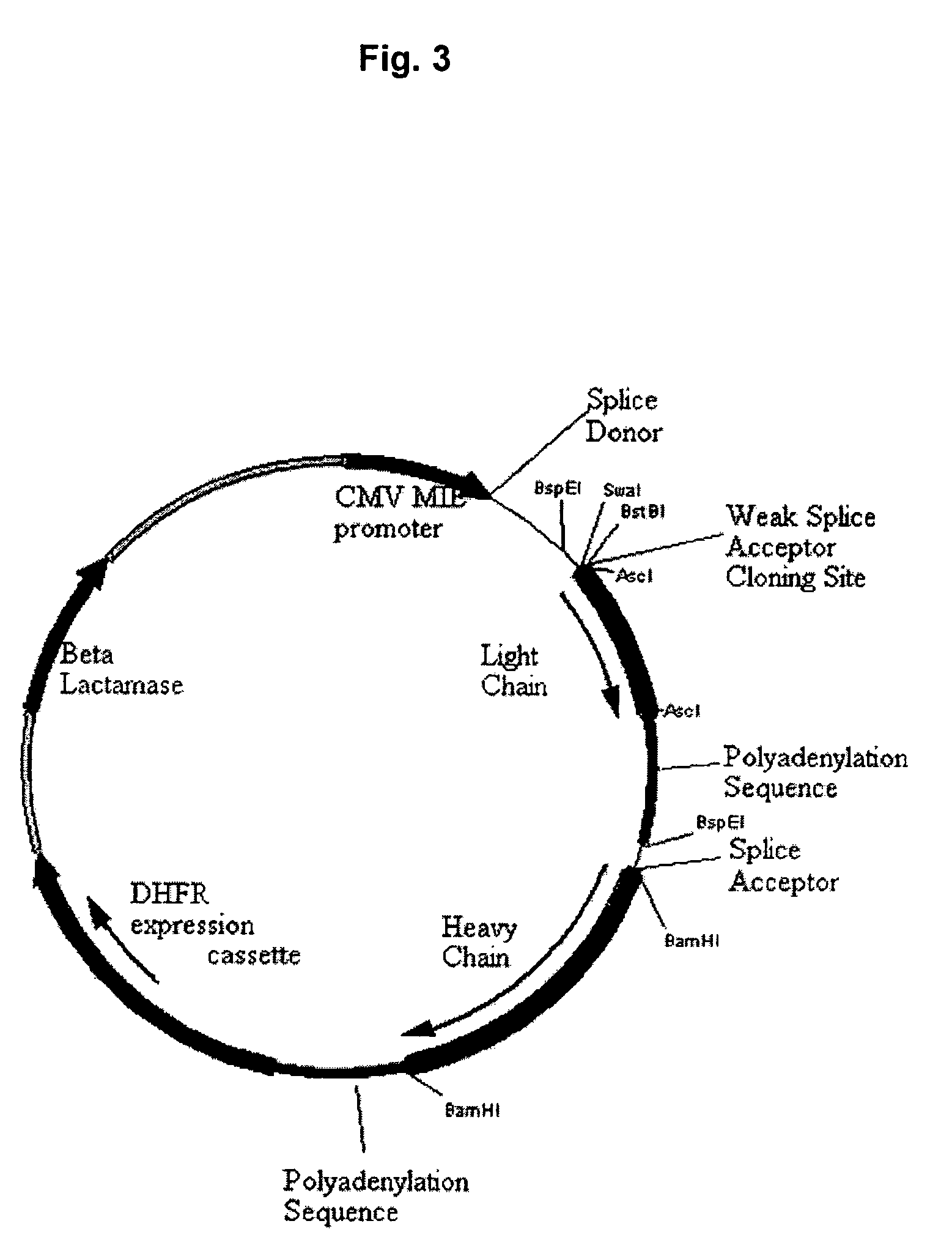Methods and constructs for expressing polypeptide multimers in eukaryotic cells using alternative splicing
a polypeptide multimer and eukaryotic cell technology, applied in the direction of vectors, depsipeptides, peptide/protein ingredients, etc., can solve the problems of high inefficiency in the production of desired multimeric complexes or cell or organismal toxicities, and the potential for promoter competition between each coding sequence is not eliminated
- Summary
- Abstract
- Description
- Claims
- Application Information
AI Technical Summary
Benefits of technology
Problems solved by technology
Method used
Image
Examples
example 1
Methods for Engineering a Vector for Expressing Multiple Polypeptides Using Alternative Splicing
[0153]The following example describes methods for constructing a vector suitable for expressing in eukaryotic cells, two or more gene products by alternative splicing.
[0154]The expression vectors described herein are derivatives of the expression vector pV80 described in U.S. application Ser. No. 10 / 545,420, which contains a native CMV intron with the native CMV splice donor and splice acceptor. Briefly, a DNA construct was made comprising (in a 5′ to 3′ or downstream direction) a cytomegalovirus immediate early 1 (CMV IE1) promoter including the 5′ untranslated region that precedes the CMV IE1 intron (human cytomegalovirus strain AD169) and the 5′ half of the CMV IE1 intron, including the native splice donor sequence (SD). The modified 3′ portion of the CMV IE1 intron included a cloning polylinker (SwaI-BstBI) for alternative splice acceptors (SA1) to be conveniently exchanged. In additi...
example 2
Methods for Determining Alternative Splicing Efficiency
[0160]In this example, methods and constructs for determining the efficiency of using alternative splicing to express two different gene products encoded by exons adjacent to different splice acceptors are described.
[0161]Although splicing is mediated by the consensus sequences at the exon / intron junctions, an accurate prediction of splicing efficacy cannot be determined by these sequences alone. For this reason an empirical approach is necessary to identify splice acceptor sequences that would generate the appropriate ratio of products, which can be measured here as the total amount of multimeric protein produced. Accordingly, the invention provides convenient vectors for efficiently screening combinations of desirable splice sites in any given cell line.
[0162]To generate a variety of expression vectors with alternative splice sites, oligonucleotides were generated with a blunt end and a BstBI compatible end for insertion into ...
example 3
Expression of Alternatively Spliced Gene Products in Eukaryotic Cells
[0166]In this example, the expression of alternatively spliced gene products, in particular, assembled IgG antibodies, is described.
[0167]Briefly, CHO cells were transfected with the alternative splicing vectors of the invention by electroporation and allowed to recover in selective media, as described supra, for about two weeks to generate stably transfected cells. After 3-5 days conditioned media was harvested and the antibody titer was determined by ELISA.
[0168]In a first experiment, 50 μg of DNA of separate vectors encoding antibody light and heavy chain, 50 μg of alternatively spliced vectors encoding both antibody light and heavy chains, or no DNA at all was introduced into eukaryotic cells (CHO) and the amount of functional polypeptide multimers produced by the cells as a function of antibody binding activity was determined (Table 2).
[0169]
TABLE 2Specific Productivity of Stable PoolsTiterTiterSpecificSpecifi...
PUM
| Property | Measurement | Unit |
|---|---|---|
| pH | aaaaa | aaaaa |
| concentration | aaaaa | aaaaa |
| concentration | aaaaa | aaaaa |
Abstract
Description
Claims
Application Information
 Login to View More
Login to View More - R&D
- Intellectual Property
- Life Sciences
- Materials
- Tech Scout
- Unparalleled Data Quality
- Higher Quality Content
- 60% Fewer Hallucinations
Browse by: Latest US Patents, China's latest patents, Technical Efficacy Thesaurus, Application Domain, Technology Topic, Popular Technical Reports.
© 2025 PatSnap. All rights reserved.Legal|Privacy policy|Modern Slavery Act Transparency Statement|Sitemap|About US| Contact US: help@patsnap.com



